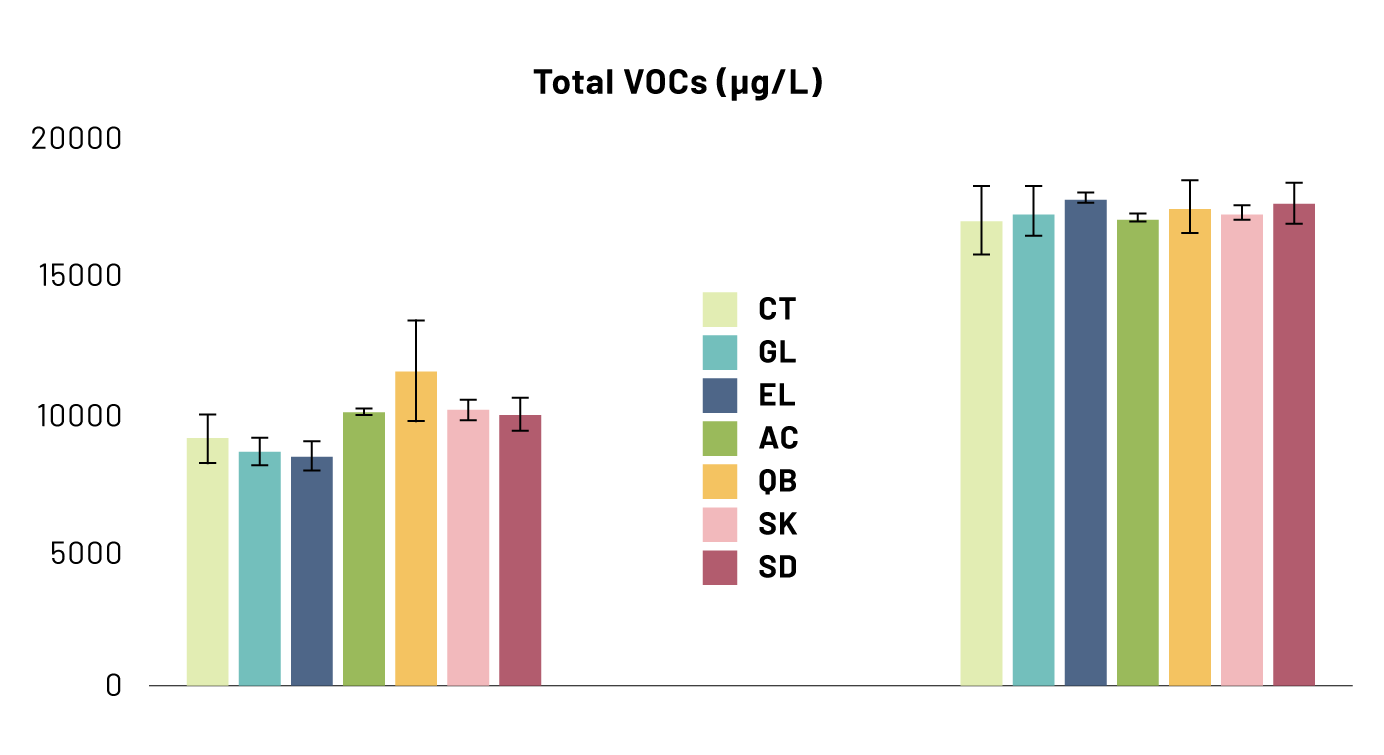
Modern winemaking is increasingly focused on the expression of nuances and refinement.
Specifically for white wines, achieving differentiation through distinctive and complex aromatic profiles is a challenging task, especially when aiming to maintain high product stability over time. However, a recent study we conducted in collaboration with the Department of Agricultural, Forest and Food Sciences (DISAFA) at the University of Turin revealed highly interesting insights, never so clearly identified in previous industry studies: oenological tannins (OETs), often overlooked due to their potential impact on color, have proven effective in protecting wine aroma compounds while leaving color tones unchanged.
Image 1. Experimental set-up of the study.
The outcomes of the analyses, which involved the application of our OETs (ellagic, gallic, grape skin, grape seed, quebracho, and acacia tannins) in microvinifications, were very promising. In the Favorita variety, the addition of quebracho in particular significantly increased the amount of aromas at the end of fermentation (Graph 1). The resulting wines showed greater aromatic complexity and intensity, especially preserving norisoprenoids, known for their fruity and floral notes.

Graph 1. Bar charts showing VOC levels produced at the end of fermentation for Favorita (left) and Erbaluce (right).
The impact of OETs on the Erbaluce variety proved different, highlighting how the choice of specific tannins determines the success of OET application in white grape varieties.
The study also assessed the chromatic impact of using OETs in wine. Although some initial changes in hue and intensity were observed immediately after adding OETs, these changes leveled out by the end of fermentation. This confirms that the use of tannins significantly affects the aromatic profile but not the color of the wine.
Further research evaluated the residual antioxidant capacity of the tannins in the wines. It was noted that grape skin and seed tannins showed the greatest potential in this regard.
In conclusion, the study shows how oenological tannins enhance aromatic expression, offer natural protection against oxidation, and maintain the color and freshness of white wines.